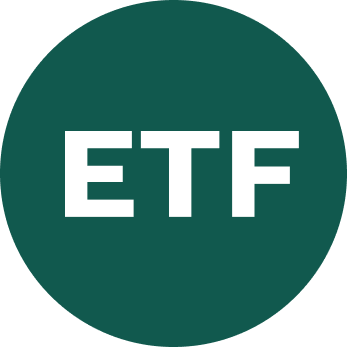

ETF: Dictionary, Abbreviations & Indexes
Confused by ETF jargon? Our ETF Dictionary simplifies key terms and concepts, helping you navigate the world of ETFs with ease. Whether you’re a new investor or looking to sharpen your knowledge, this glossary is your go-to resource.

ETF Dictionary: 8 Must-Know Terms for Smart Investing
- Exchange-Traded Fund (ETF)
An ETF is a basket of investments, like stocks or bonds, that trades on an exchange like a stock. It combines the diversification of a mutual fund with the flexibility of a stock, making it an attractive option for both beginners and experienced investors. - Diversification
Spreading your money across different investments helps reduce risk. Since ETFs hold multiple assets, they automatically diversify your portfolio, making them a great way to invest smarter, not harder. - Total cost percentage
This is the annual fee you pay to invest in an ETF, expressed as a percentage of your total investment. Lower fees mean more of your money stays invested and working for you—so always compare expense ratios when choosing an ETF. - Liquidity
ETFs trade throughout the day like stocks, meaning you can buy or sell them whenever the market is open. The more liquid an ETF is, the easier it is to trade without affecting its price. - Market Maker
A market maker ensures there’s always someone ready to buy or sell ETF shares, keeping prices fair and trading smooth. This is one reason ETFs tend to have lower trading costs than some other investments. - Dividend Yield
Some ETFs pay dividends—regular payouts from the profits of the companies they invest in. If you’re looking for extra income, dividend ETFs can be a great way to earn while you invest. - Tracking Error
This measures how closely an ETF follows its benchmark index. A lower tracking error means the ETF does a good job replicating the index’s performance—important for those seeking true passive investing. - Dollar-Cost Averaging (DCA)
In the literature regarding ETFs you will find the concept of Dollar-Cost Averaging, but of course the same strategy can be used when you invest in euros. Investing a fixed amount of euros at regular intervals—whether the market is up or down—helps smooth out price fluctuations. For example, by investing €100 each month into an ETF, you buy more shares when prices are low and fewer when prices are high, reducing the impact of market swings. ETFs are perfect for this strategy, making it easier to build wealth over time without worrying about market timing.
Understanding ETF Abbreviations
What Is an Index?
An index is a collection of stocks, bonds, or other assets that represent a specific market, sector, or investment strategy. It serves as a benchmark to track the performance of that market. ETFs (Exchange-Traded Funds) are often built to follow an index, meaning they try to replicate its performance.
Below are some of the most important abbreviations you’ll encounter when investing in ETFs:
Key ETF Abbreviations
Index Providers & Index Types
MSCI (Morgan Stanley Capital International): One of the largest providers of stock market indices, commonly used in ETFs. Examples include MSCI World, which tracks developed markets, and MSCI Emerging Markets, which covers developing economies.
ACWI (All Country World Index): A global index that includes both developed and emerging markets, making it more comprehensive than MSCI World.
S&P (Standard & Poor’s): A major index provider. The most famous index is the S&P 500, which tracks the 500 largest U.S. companies.
FTSE (Financial Times Stock Exchange): A UK-based index provider, known for the FTSE 100 (largest UK companies) and FTSE All-World, which covers global markets.
STOXX: A European index provider, known for indices like Euro STOXX 50, which tracks the 50 biggest companies in the Eurozone.
EMU (Economic and Monetary Union): The EMU index covers stocks from countries that are part of the Eurozone, meaning nations that have adopted the euro (€) as their currency.
IMI (Investable Market Index): An IMI index includes large, mid, and small-cap stocks, covering a broader market than standard indices that focus only on large companies.
ETF Share Classes & Dividend Policies
ACC (Accumulating): The ETF reinvests any dividends it receives, meaning your investment grows over time without paying out cash dividends. In some cases the abbreviation ‘cap’ for capitalization, is also used to indicate the fund reinvests its dividends.DIST (Distributing): The ETF pays out dividends to investors instead of reinvesting them. Useful for those who want regular income. In some cases the abbreviation ‘inc’ is also being used, for income.
ETF Characteristics & Trading
UCITS (Undertakings for Collective Investment in Transferable Securities): A European regulatory standard for investment funds, ensuring investor protection and easy trading across EU countries.
ETF (Exchange-Traded Fund): A fund that tracks an index and is traded on the stock exchange like a regular stock.
NAV (Net Asset Value): The value of an ETF’s assets divided by the number of shares. Used to measure whether an ETF is trading at a premium or discount.
Types of ETFs
ESG (Environmental, Social, Governance): ETFs that invest in companies meeting certain sustainability or ethical criteria.
Smart Beta: A strategy that selects stocks based on factors like value, momentum, or volatility, rather than just market size.
Sector ETFs: ETFs that focus on a specific industry, such as technology ETFs or healthcare ETFs.
Bond ETFs: ETFs that invest in bonds instead of stocks, often used for stability and income.
What Is a Stock Index?
A stock index is a collection of stocks that represents a specific part of the financial market. It helps investors track the overall performance of a group of companies, industries, or even entire economies. Indexes are used as benchmarks for investment funds and ETFs, and they give a general idea of how the stock market is performing. Some indexes focus on specific countries (like the BEL 20 for Belgium), while others track global markets or particular industries (like technology or healthcare).
Key Stock Indexes and Their Descriptions
- S&P 500 (U.S.A.)
The Standard & Poor’s 500 comprises 500 of the largest publicly traded companies in the United States. It covers various industries and is considered one of the best indicators of the overall U.S. stock market performance.
- Nasdaq-100 (U.S.A.)
This index consists of 100 of the largest non-financial companies listed on the Nasdaq stock exchange. It is heavily focused on technology companies, including giants like Apple, Microsoft, and Google.
- Dow Jones Industrial Average (U.S.A.)
The Dow Jones tracks 30 major U.S. companies across different industries. Although it includes fewer stocks than the S&P 500, it is one of the oldest and most famous indexes in the world.
- Russell 1000 (U.S.A.)
The Russell 1000 represents the 1,000 largest companies in the U.S. stock market, covering about 90% of the total market value. It provides a broader view of large-cap stocks than the S&P 500.
- Russell 2000 (U.S.A.)
The Russell 2000 tracks 2,000 smaller companies, making it a key benchmark for small-cap stocks in the U.S. This index is often used to measure the health of smaller businesses and growth companies.
- BEL 20 (Belgium)
The BEL 20 represents the 20 largest and most actively traded companies on the Brussels Stock Exchange. It is the key benchmark for the Belgian stock market.
- Euro Stoxx 50 (Europe)
This index comprises 50 of the largest and most important companies from eurozone countries like Germany, France, and Spain. It serves as a leading indicator for the European economy.
- DAX (Germany)
The DAX (Deutscher Aktienindex) tracks the 40 biggest companies on the Frankfurt Stock Exchange, including firms like Siemens, BMW, and Adidas. It is the most important index for Germany.
- CAC 40 (France)
The CAC 40 lists the 40 largest companies on the Paris Stock Exchange and is the main indicator of the French economy.
- FTSE 100 (United Kingdom)
The FTSE 100 comprises the 100 largest companies on the London Stock Exchange. It features many multinational firms, making it an important index also beyond the U.K.
- Nikkei 225 (Japan)
The Nikkei 225 is Japan’s main stock index, featuring 225 major companies from industries like technology, automotive, and finance.
- Hang Seng Index (Hong Kong/China)
The Hang Seng Index follows the largest companies on the Hong Kong Stock Exchange, including many of China’s biggest firms.
- MSCI World (Global)
The MSCI World Index tracks over 1,500 companies from developed countries worldwide. It is widely used to measure the performance of global stock markets.
- MSCI Emerging Markets
This index focuses on stocks from developing economies such as China, India, Brazil, and South Africa. It gives insight into the performance of fast-growing markets.